Experiencing golf cart backfires while enjoying a tranquil ride along the golf trail can be quite a nuisance. This issue primarily arises due to the improper closing of the throttle plate when the microswitch activates the ignition.
When the throttle cable is not set up properly, the throttle plate can stay slightly open. This means that unburned gasoline can build up in the exhaust system before the spark plug fires. To stop these backfiring problems, make sure to adjust your golf cart’s engine correctly.
To fix the backfiring issue in your golf cart, you need to adjust the throttle cable correctly. This adjustment makes sure that the throttle plate, which is on the side of the carburetor, is fully closed when the engine is off. The throttle plate helps control how much air and fuel goes into the engine.
Backfiring usually happens in gas-powered golf carts. These carts have several parts that work together, like the accelerator throttle plate, valves, pistons, mufflers, and accelerator cables. If the fuel mixture is wrong or if there’s carbon buildup inside the engine, it can also cause backfiring.
If your golf cart is still backfiring even after making these adjustments, you should check the air filter or get help from a professional golf cart mechanic. By figuring out and fixing the backfiring problem, you can make your golf cart run smoothly again and enjoy a nice, quiet ride.
How To Fix Golf Cart Backfires
1. Golf Cart Backfires When Throttle Plate Doesn’t Close Correctly
When the throttle plate doesn’t close correctly, your golf cart backfires. To ensure the optimal functioning of your gas-powered golf cart, the microswitch plays an important role. It must engage before the accelerator throttle plate begins to shift. This is a crucial initial inspection point when addressing backfiring problems in your golf cart.
Before you proceed, ensure the ignition key is in the ‘off’ position and the seat is removed. This enables you to better observe the throttle mechanism. With gentle and measured pressure, depress the accelerator pedal. Listen carefully for the sound of the microswitch engaging, signified by a distinct click. The microswitch is typically situated near the pedal or just inside the engine compartment.
An important aspect to note is the movement of the throttle plate. It should remain static until the click of the microswitch is heard. If the throttle plate shifts before the click, it indicates the throttle cable needs adjustment.
Adjusting the accelerator cable is a task that needs precision. It controls the amount of fuel entering the carburetor. An imbalanced fuel mixture can cause the cart to backfire. Therefore, you must ensure that the accelerator cable is properly adjusted to prevent any backfiring issues.
Golf Cart Throttle Cable Adjustment
Golf cart throttle cable adjustments differ between manufacturers and makes. Your model may have a throttle cable that slides through a hole in the throttle lever and is secured with a screw or stop nut. Adjustment is made by loosening the nut or screw, pressing the throttle closed, and then retightening the nut.
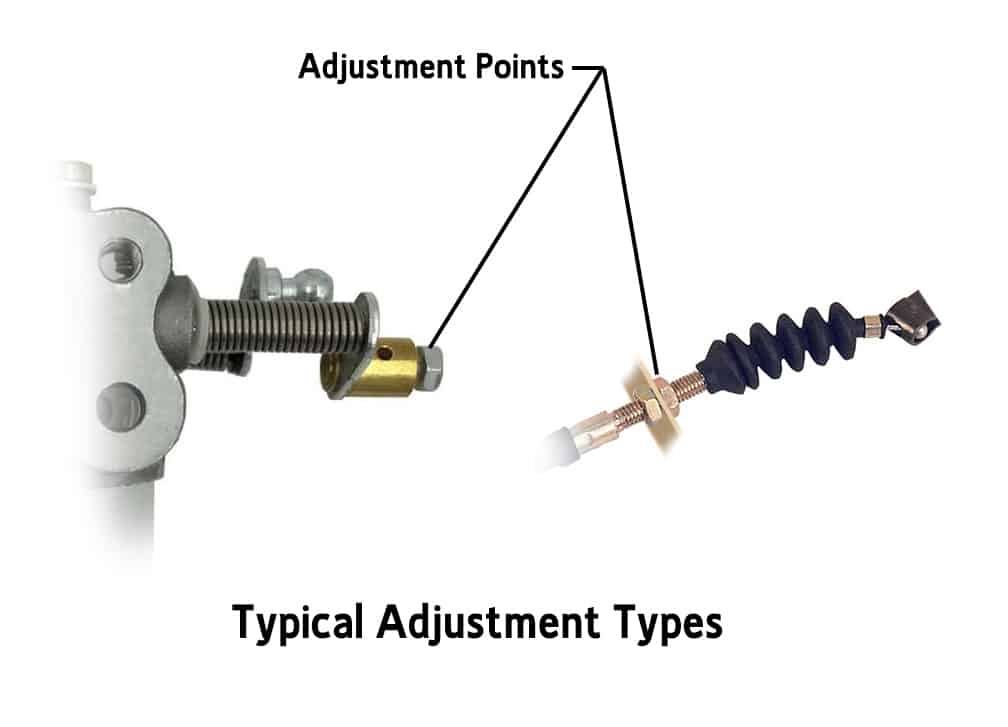
Notably, some gas-powered golf carts do not use accelerator cables. Instead, they utilize a series of rods that link the gas pedal to the carburetor. Adjusting these rods, especially the last one in the series, might be necessary to ensure the carburetor throttle plate can fully close.
However, if these modifications to the accelerator cable don’t solve the problem, the issue may lie with the throttle plate. The throttle plate might not be closing entirely due to either an obstruction or a bent internal mechanism. Unfortunately, diagnosing this requires removing the carburetor for inspection.
2. Golf Cart Backfires Because Fuel Mixture Is Too Rich
Golf cart backfires can occur because the fuel mixture is too rich. This is why it is important to regularly evaluate and adjust the air and fuel ratio. This ensures that the engine doesn’t ingest an overly rich fuel mixture, which could lead to detrimental effects such as backfiring. The procedures for adjustment may differ across models, so it’s advisable to consult your specific golf cart’s engine guide for precise instructions.
For instance, if you own a 2-cycle engine golf cart, you’ll find the adjustment screw located on the side of the carburetor. It’s recognizable by the presence of a lock nut at the base. To adjust, you need to loosen the lock nut, rotate the screw fully into a soft seat, and then back it out one and a half (1-1/2) turns. This position is typically parallel to the ground.
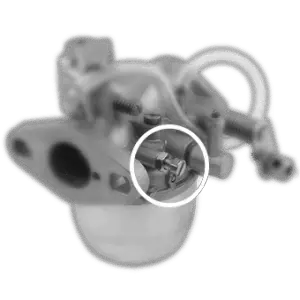
In contrast, a 4-cycle engine golf cart, comes with a minimal adjustment plastic cap limiter, positioned on the top of the carburetor. As such, it requires little to no adjustment.
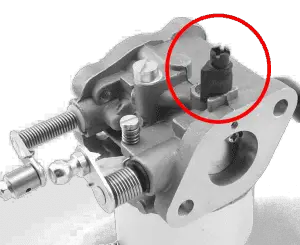
For optimal results, some golf cart maintenance experts recommend removing the drive belt before adjusting the fuel mixture. This is followed by gradually turning out the fuel adjustment screw until the engine operates at its peak performance. At this point, the lock screw is secured, the engine is switched off, and the drive belt is reinstalled.
Regardless of your golf cart model, these steps will help to fix your golf cart from any backfiring problem and optimize its performance. These adjustments are part of routine golf cart maintenance and are key to extending the lifespan of your golf cart parts.
3. Golf Cart Backfires Because Of A Carbon Buildup On Piston/Valves
One less common cause of golf cart backfires could be carbon buildup on the piston, also known as coke. This substance can become red-hot after the golf cart’s engine has been running for a while, leading to the ignition of the fuel without the spark plug being active.
To address this issue, you may need to access the top of the piston by removing the head from inside the engine. If you notice a carbon buildup, it’s critical to scrape it off carefully using a blunt tool. This is because the piston’s material is soft and can easily scratch or gouge.
A scratch or gouge could cause the edges to glow red, creating an ignition point that could lead to golf cart backfires just as much as the original issue. This would negate the purpose of de-coking. Hence, cart maintenance is key to prevent such problems.
4. Golf Cart Backfires Because Of A Carbon Buildup In The Muffler
This problem often occurs due to various reasons, one of them being a clogged muffler. The muffler is designed to reduce noise produced by the golf cart’s engine exhaust system. However, it can accumulate carbon buildup, leading to unburned gasoline ignition.
To stop backfiring, you need to unclog the muffler. This process, known as un-coking, involves removing the muffler from the golf cart and subjecting it to heat. One common way to do this is to place the removed muffler over a fire for approximately 30 minutes. This method effectively burns off the debris inside the muffler, converting it into ash.
After this process, it’s important to let the muffler and the entire exhaust system cool down. Once cooled, you should then turn the muffler on its end and tap its sides. This action helps to dump the ash out, ensuring your golf cart’s muffler is clean and free from any combustion-inhibiting debris.
Regular cart maintenance is crucial to prevent any backfiring issues. It allows you to spot and rectify any problems that could cause backfiring, including carbon buildup in the muffler. If your golf cart backfires, it’s advisable to check all parts, including the muffler, to diagnose and fix the problem.
As you take care of your golf cart and ensure its parts are in top shape, you’ll improve its performance and lifespan. This way, you can continue to enjoy your rides without worrying about any unexpected backfires.
Remember, if the golf cart backfires persist, it might be time to take your cart to a professional for a thorough check-up and repair. They can help you pinpoint the precise issue causing the backfire and offer a suitable solution to solve the problem.
Related Questions To Golf Cart Backfires
How Do I Clean The Carburetor To Stop Golf Cart Backfires?
Cleaning the golf cart carburetor will require you to obtain a rebuild kit, or at the very least, a gasket kit. The gaskets and seals will not re-compress properly if you try to reuse them. If you buy a kit online, specify the year and make of your golf cart and make sure that it includes the main jet and gaskets required to finish this job.
It would be a good idea to get a brand new gas filter and air cleaner filter while you’re at it as these are fairly inexpensive and will ensure a complete job. Periodic replacement of the fuel pump is also recommended since they are very inexpensive.
Begin this process by turning off the fuel line to the carburetor. If your golf cart does not have a shut-off valve, merely disconnect the fuel line and pinch It off or plug it with a screw.
Remove the air filter cleaner and all lines and accelerator cable linkages attached to the carburetor. Unbolt and remove the carburetor from the engine body and we can begin disassembly.
Before removing the air mixture screw, turn it all the way in (gently) to a soft seat and count the number of turns. You will want to put this back in the same position when you are done. If you find that it is 1 and 1/2 turns from a soft seat, you’ll want to reinstall it to the same position.
Remove the fuel bowl and main jet, making careful note where all springs and gaskets are located. (it might be a good idea to take a picture of it with your cell phone.) Using a can of carburetor cleaner, spray all the ports and jets thoroughly. Use a bristle brush to remove the heavier deposits inside the fuel bowl and outside the carburetor body.
If compressed air is available, blow out all of the ports and passageways. A can of compressed air used for electronics will do the job nicely.
Wipe all of the parts down with a clean cloth and reassemble the carburetor in the reverse order that you disassembled it in. When putting the air mixture screw back in, turn it to a soft seat and then back it off to the number of turns you took note of earlier.
Bolt the carburetor back on to the engine head and reattach the cables and other lines. Replace the fuel filter and reconnect the line to the carburetor inlet.
The last step is to put the air cleaner back on (with the new filter installed) and bolt it back into place.
The engine will take a few turns before the pump can fill the fuel bowl, but should start right up. Let the engine warm up a bit and watch for any issues, such as leaks at the connection points.
What Does An Igniter Do On A Golf Cart?
Older golf carts used a set of points and a condenser to produce the spark needed to run the engine, but the more modern carts have a solid-state ignition system. The solid-state system utilizes an internal magnetic pickup device inside the engine that sends an electrical signal down the line to the igniter.
The igniter then takes that signal and boosts it down the line to the ignition coil, and the ignition coil creates the necessary voltage to cause the spark plug to…well, spark.

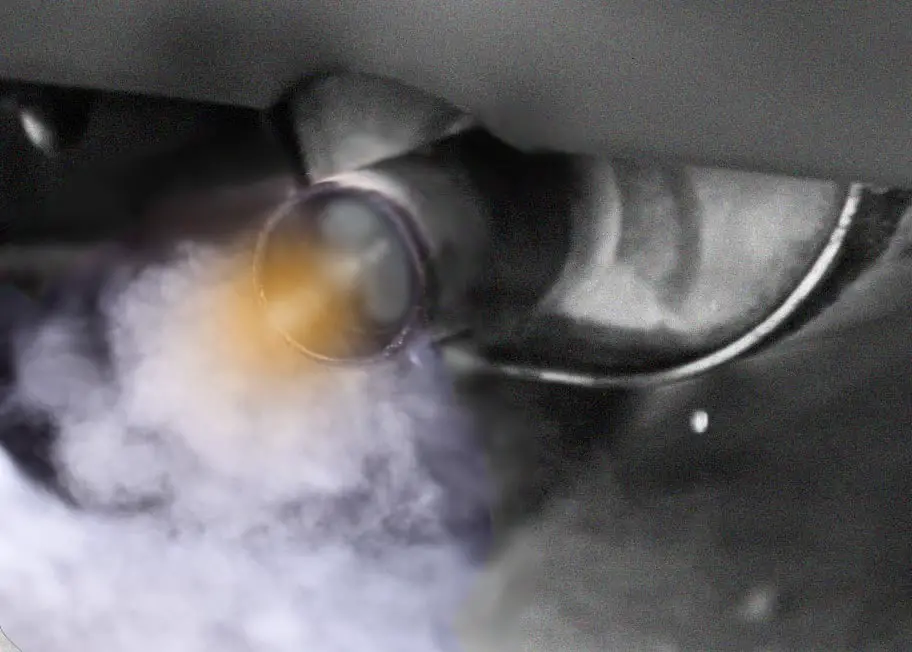

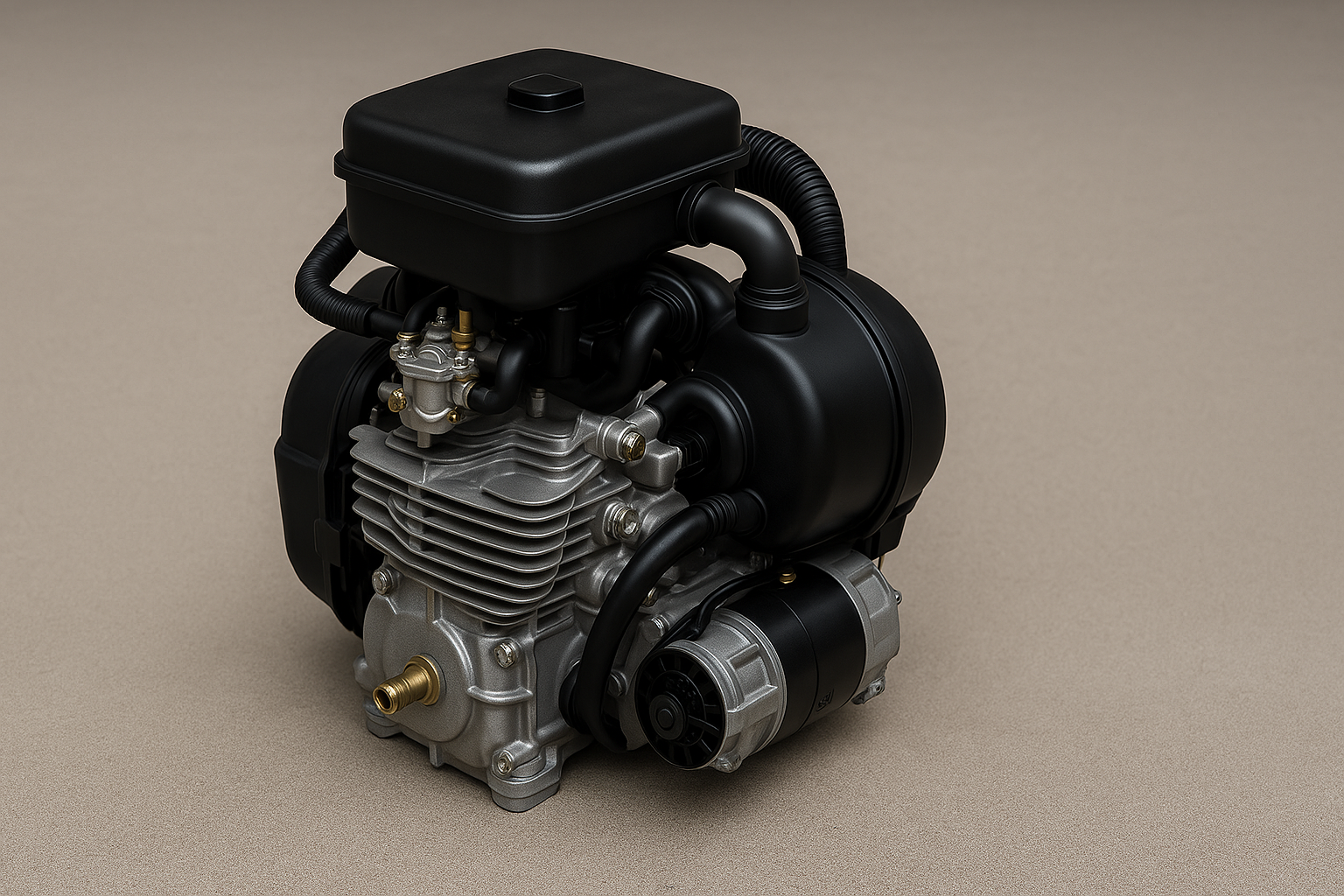
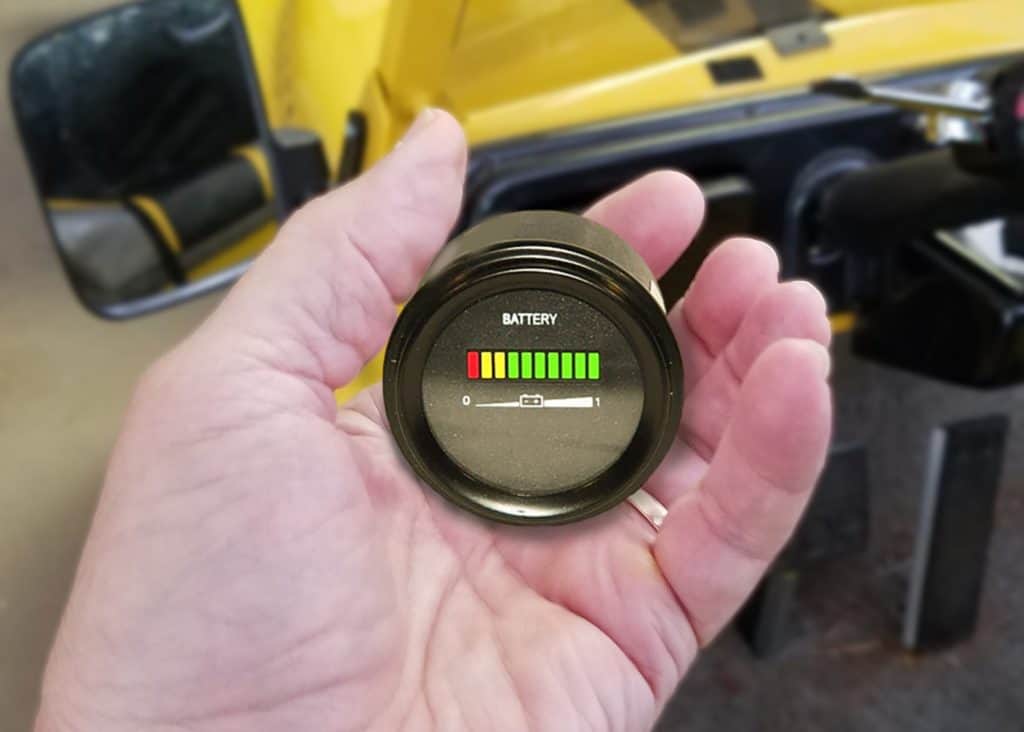

Leave a Reply